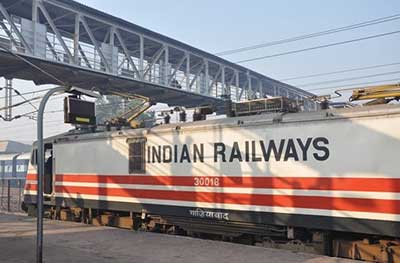Relevance: GS-3: Indian Economy, mobilization of resources, changes in industrial policy and their effects on industrial growth.
Key Phrases: Minister for Railways, infusion of investments, indigenous technology, modern technology rolling stock, Request for Qualifications proposals, CONCOR, financially sustainable, dedicated freight corridors (DFCs), Railways’ production units (PUs),, Indian Railways Rolling Stock Company
Why in News?
- Recently, the Minister for Railways, Ashwini Vaishnaw, said that the government had no plans to privatise the Railways.
- However, he stressed on the need for the Railways to adopt latest technology to meet the aspirations of the passengers, and that indigenous technology, like the contribution of Integral Coach Factory (ICF) to Vande Bharat Express, should take the sector forward.
Objectives of Privatisation:
- To introduce modern technology rolling stock with reduced maintenance.
- Reduced transit time.
- Boost job creation.
- Provide enhanced safety.
- Provide world-class travel experience to passengers.
- Reduce demand-supply deficit in the passenger transportation sector.
Background:
- Indian Railways launched an ambitious plan to privatise 5 percent of Mail/Express trains in 12 clusters with a view to inducting modern technology and improving travel experience.
- Private companies will also be given the freedom to procure locomotives and trains from their source of choice.
- However, the response from prospective bidders was poor as the Railway Board failed to gauge the concerns raised by them.
- Railways has invited Request for Qualifications proposals, for scrutiny of vendor capabilities, from those who can bring modern trains for operations on existing rail infrastructure.
- Similarly, the Railways sought participation from State governments,
private players, and public sector undertakings to operate around 150
tourism-focussed trains.
- However the old ICF coaches offered to the prospective players, which would need to be refurbished and then operated.
- Private players didn't not like to go ahead with Old coaches, and also the project does not seem to be viable except for a handful of trains.
Key Suggestions:
- Freight Segment Reforms Needed:
- In the freight segment, private container trains have been operational since 2006 in a limited way but large-scale penetration of private freight trains has not happened.
- This is partly due to the presence of the Railways’ own CONCOR, which remains a market leader, and its reluctance to provide a level-playing field to private operators.
- Suggestions:
- Bring private players into freight business, like the largely successful transportation of automobiles in privately-owned special-purpose wagons
- Allow Privately-owned coaches to carry steel coils, bulk cement, fly ash, alumina, etc.
- Fast-tracking the process of auctioning routes in the dedicated
freight corridors (DFCs) to private operators to run freight trains.
- Establish many intermodal depots and depend on the Railways’ progress in exploiting the true potential of DFCs in terms of permissible speeds and loads, and upgradation of feeder routes.
- Railways should change its mentality to look at the prospective private players as partners and not as competitors.
- Production Units Privatization For Quality and Efficiency:
- Speedy implementation of plans of corporatisation of the Railways’ production units (PUs), its manufacturing factories.
- Establish a special purpose vehicle like Indian Railways Rolling Stock Company, which can speedily begin the corporatization process.
- Better implementation of initiatives:
- Corporatising Ordnance factories, with 41 of them converted into seven Defence Public Sector Undertakings.
- PPP model for manufacture and operation of locomotives in different states.
- Transparency in Bidding and Auction Process:
- Recently, Railways announced to float a large tender of around ₹25,000 crore for the procurement of 200 equivalents of Train 18/Vande Bharat trains to be built largely in private factories in India.
- This came after the Budget announcement that 400 Vande Bharat trains would be introduced in three years.
- Transparency and accountability should be the topmost priority to get best tender to efficient private players.
Issues in Privatization:
- There is fear that it will lead to increase in fair prices of rail travel and job losses.
- It will harm the interest of marginalized communities (Scheduled
Castes, Scheduled Tribes and Other Backward Classes), who get reservation
under government jobs.
- Since there is no reservation in private sector employment.
- Private companies are unpredictable in their dealings and do not share their governance secrets with the world at large. In such a scenario it would be difficult to pin the accountability on a particular entity, if there be a mishap.
Conclusion:
- Railways should gradually move towards privatisation initially with privatization of manufacturing units, thereby encouraging the private sector in other sectors and downsizing its PUs gradually.
- This Indirect approach is better than stated explicitly given the sentiments and politics involved in depriving a thriving government sector.
- It is important to modernize the railways, so measures must be taken and implement them effectively so that resources of the railways are better allocated and facilities are upgraded from time to time.
Source: The Hindu BL
Mains Question:
Q. Railway privatization presents an opportunity for the Indian Railways to modernize without fiscally pressurizing the government. Analyse the statement. Also suggest some strategies for speedily Railways modernisation for India.( 15 marks).








